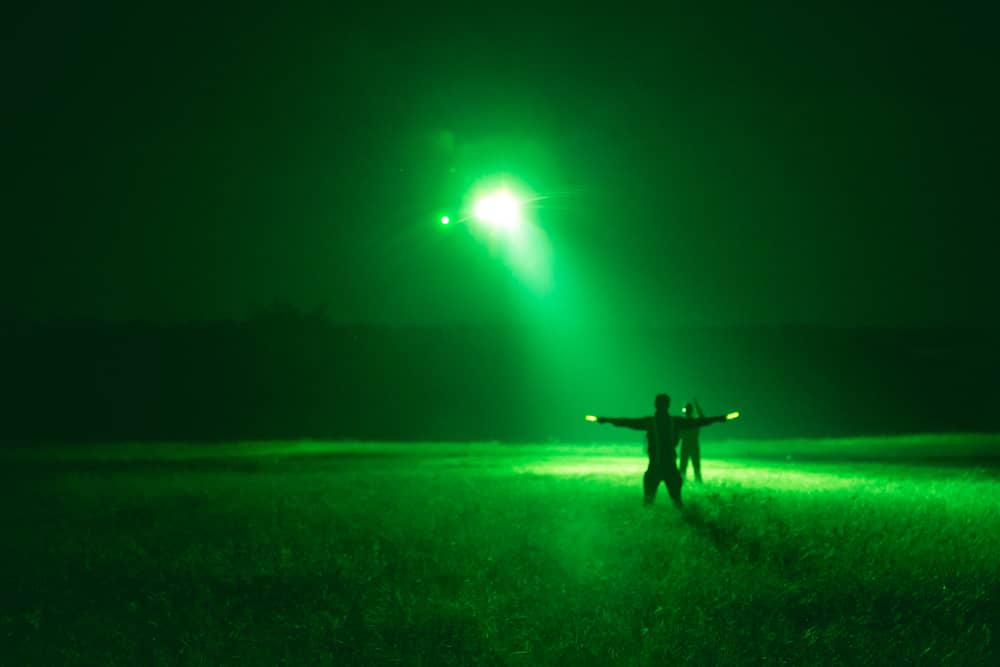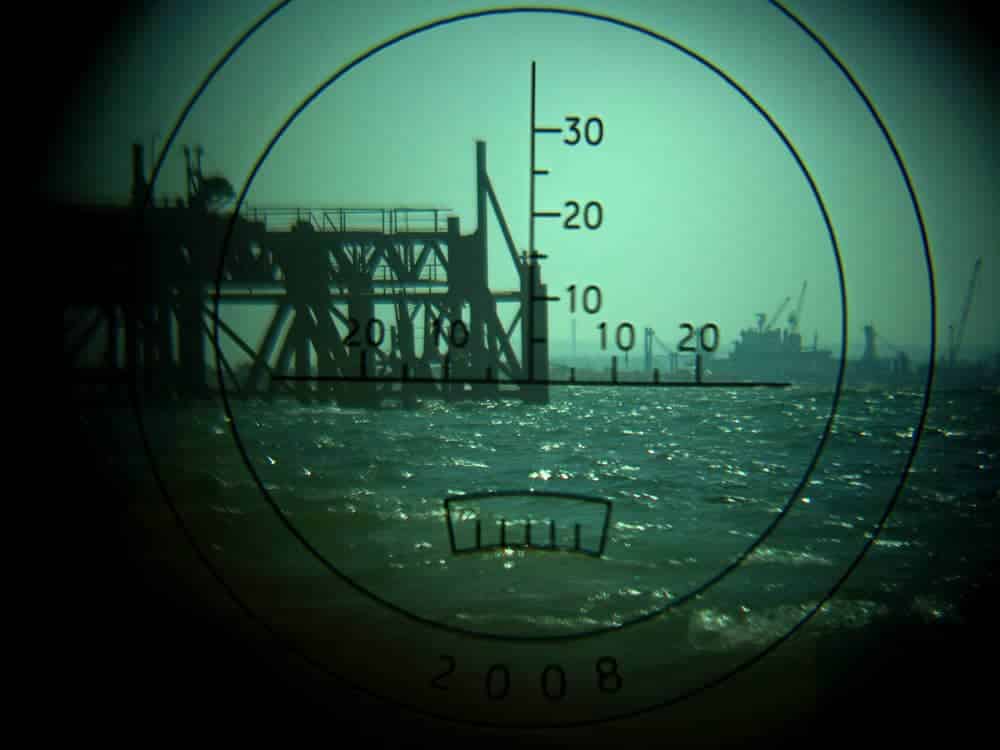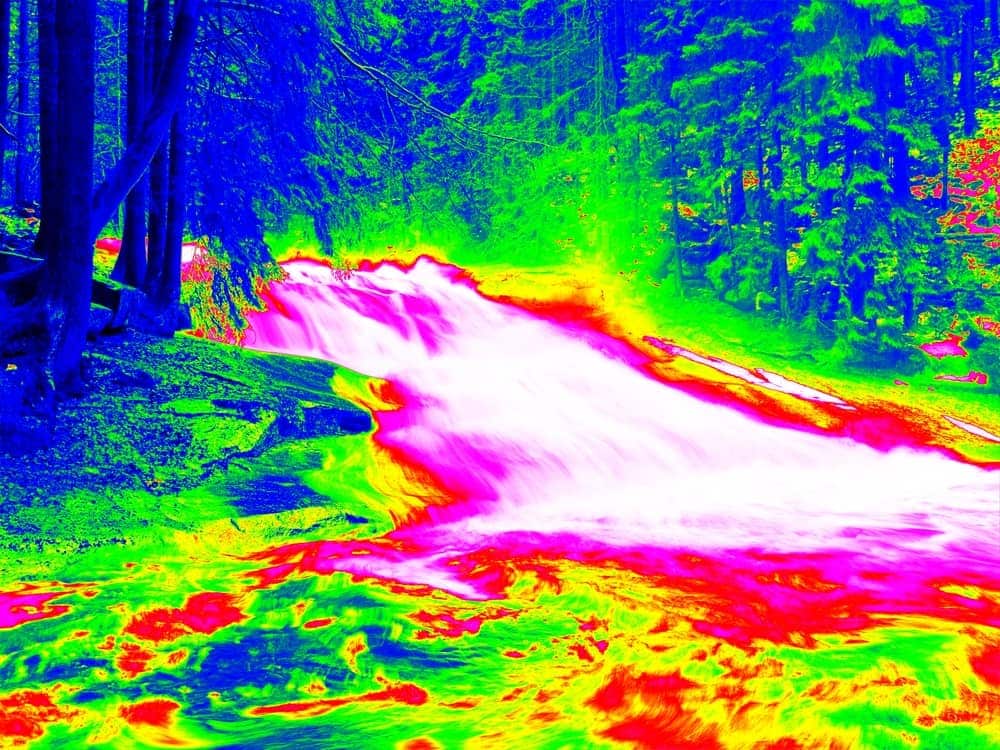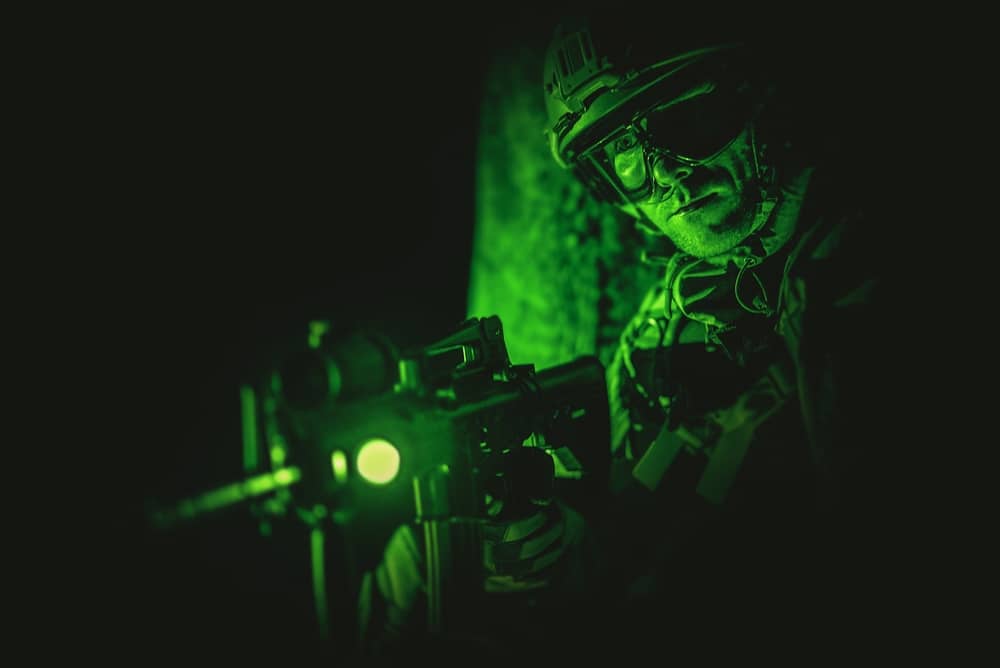Using helicopter night vision systems, nighttime pilots and operators can advance their situational awareness by seeing the terrain, obstacles, and other objects that their naked eyes otherwise cannot see.
Although helicopter night vision systems can provide enhanced perception even at higher altitudes, such as aircraft lights, SOS flares, and even tiny car headlights, there are still limitations to the technology that renders night vision goggle flight training an absolute must-have for its users.
But aside from this requirement, the importance of helicopter night vision systems cannot be overstated in daily operations. From surveillance, search and rescue, and even firefighting, let us dive deep into how these helicopter night vision systems began and how they continuously evolve the ways we perform nighttime operations.
How do helicopter night vision systems work?
Night vision goggles (NVG) allow users to see at low-light settings, even from a far distance. They are electro-optical devices that do not rely on light sources, instead amplifying or enhancing the existing or ambient light in the environment to illuminate the user’s vision. Helicopter night vision systems leverage ambient light, such as the glow from the moon and stars, or simply the light from distant manmade light sources, such as cities.

Through electronic means, image intensifiers use ambient light and amplify it a thousandfold. Then this “intensified” image is then displayed to its soldier using a phosphor screen, which is what night vision goggles ultimately are. With this setup, it can be said that NVGs are merely the venue where image intensification happens. It is the phosphor screen that provides its users the illuminated vision even in low-light conditions.
Given their purpose, these helicopter night vision systems are sensitive to a broad spectrum of light, whether they are visible (ambient) or invisible (infrared, also referred to as IR).
Since the Federal Aviation Administration (FAA) greenlit its first Supplemental Type Certificate (STC) allowing the use of NVG for special cases, helicopter night vision systems were not restricted to the military and policy anymore. Even civilian helicopter operators, such as those providing emergency medical service (EMS), can now utilize these game-changing helicopter night vision systems.
But this STC was just the start. Since 1999, the democratization of this powerful technology spread to commercial aviation pilots and operators when they have been allowed more freedom to leverage helicopter night vision systems. In fact, future legislative modifications are underway to further advance its wider use.
What are the technologies used in helicopter night vision systems?
Image intensification
This helicopter night vision systems technique uses a complex energy particle conversion, forming the basis of night vision. Inside a vacuum tube, photons are collected using an objective lens and then converted to electrons. These materials are all closely-knit inside the vacuum tube to prevent electron scatter.
Next, the conversion and amplification are mechanized through a miniature power supply that provides the voltages needed for these processes. The conversion is done through a photocathode, which turns electrical energy to light through a phosphor screen. Once in the phosphor screen, the intensified image is presented to the goggle user through an eyepiece lens.

For electron amplification, this process mainly occurs inside the multi-channel plate (MCP). This tiny but significant component is packed with millions of closely-adjoined channels within its thin disc, which multiplies the electrons that pass through its walls.
These reproduced electrons are then reconverted to light once they hit the phosphor screen, generating light that can be 1000x brighter than the light collected from the environment.
Lastly, this helicopter night vision system’s phosphor screen reproduces this intensified light in the same pattern as the one captured through the objective lens. This process provides military, commercial, or civilian aviation pilots an accurate, intensified, and brightened image of the terrain, no matter how dark the conditions are.
Infrared light
As mentioned above, helicopter night vision systems are sensitive to a broad spectrum of light, regardless if they are visible or invisible to the naked eye. Among the invisible light sources are infrared or IR light, falling just outside of the wavelength of human vision.
Unlike image intensification, which works best with some sort of ambient light nearby, laser-based NVGs use IR LED arrays that illuminate areas which are otherwise too far to gather light from.
Since infrared light is invisible to the human eye, laser-based helicopter night vision systems are ideal for covert operations. Its IR LED arrays are only detected through a camera sensor, which then converts the image to a crisp and clear monochromatic image. It is commonly used for surveillance purposes since it can illuminate images that are too dark or too far for cameras to perceive clearly.
While it is excellent for compensating for distance and darkness, laser-based helicopter night vision systems admittedly fall short when it comes to wide-angle surveillance or threat detection. Additionally, it is worth noting that infrared lights may be invisible to the human eye, but their source can still be perceived as a faint red glow from a distance. The IR LED array can also be detected by many cameras, potentially revealing the location of its source.

Since these helicopter night vision systems use laser, make sure that users are wearing appropriate eyewear protection to avoid any permanent eyesight damage. Be wary of fire-prone materials too, since pointing the heat-generating laser at them can be a fire hazard in close proximities.
Thermographic imaging
Unlike the helicopter night vision systems above, NVGs that use thermographic imaging do not rely on light. Instead, it generates vision using heat emitted from a wide range of materials.
While heat, which generates thermal energy, and light form part of the electromagnetic spectrum, a camera can only detect either of these elements. A thermal camera detects the slightest difference in heat, even detecting a 0.01°C difference between materials.
These thermal differences are then displayed in different shades, which make up the visual aspect of thermographic imaging. From sub-zero materials such as ice up to warm-blooded mammals, everything emits thermal energy, also referred to as heat signature. These heat signatures are then translated into an image that lets users see distinct visuals of the area.
This is why heat-reliant helicopter night vision systems are efficient no matter how dark the environment is. Since all materials generate, absorb, and disperse heat uniquely from each other, covert operations do well with helicopter night vision systems that leverage thermographic imaging.
However, the strength of the thermographic night vision goggles can also be a setback. For instance, it does not do well amidst dust and transparent obstacles, such as glass or water. Since it only relies on heat, thermal helicopter night vision systems also cannot give you high-detail images. While it is effective for detecting targets, it does not perform as well in identifying them.
Before you jump right in
Regardless which of these helicopter night vision systems you prefer, it is important to be aware of the pros and cons of each technology. Given how NVGs can reduce visual acuity, add weight to head equipment, and impair head pressure, night vision goggle flight training is imperative for anyone operating these helicopter night vision systems.
Although the use of helicopter night vision systems is more democratized than ever before, operational use of these NVGs should only be implemented after extensive training and on-the-ground supervision using these powerful tools. Even though NVGs use complex methods and sophisticated components that make vision even at the lowest or absent light sources possible, their full benefits can be leveraged more effectively if pilots are equipped with the proper knowledge and experience operating them.
Helicopter night vision systems cannot turn night into day, but their safety, operational, and tactical advantages can make a night and day difference in the right hands. With proper preparation and implementation, these cutting-edge night vision technologies can push you toward your goals more efficiently.

